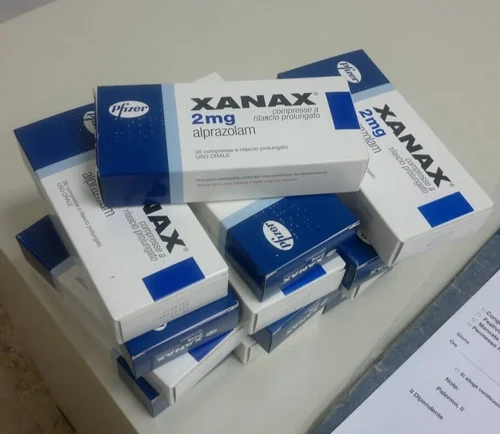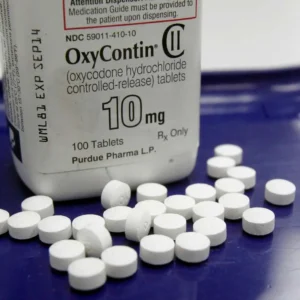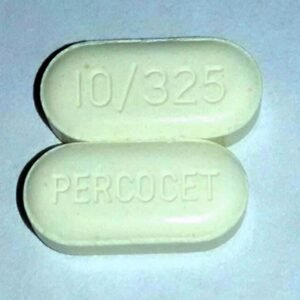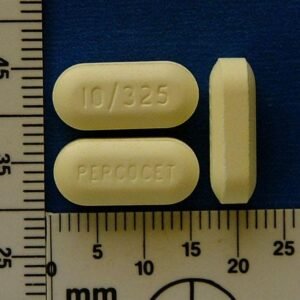Xanax 2mg
$350.00 – $2,300.00
Why is this medication prescribed? Alprazolam is used to treat anxiety disorders and panic disorder (sudden, unexpected attacks of extreme fear and worry about these attacks).brain
Alprazolam tablets, USP are indicated for the management of anxiety disorder (a condition corresponding most closely to the APA Diagnostic and Statistical Manual [DSM-III-R] diagnosis of generalized anxiety disorder) or the short-term relief of symptoms of anxiety. Anxiety or tension associated with the stress of everyday life usually does not require treatment with an anxiolytic.
Generalized anxiety disorder is characterized by unrealistic or excessive anxiety and worry (apprehensive expectation) about two or more life circumstances, for a period of 6 months or longer, during which the person has been bothered more days than not by these concerns. At least 6 of the following 18 symptoms are often present in these patients: Motor Tension (trembling, twitching, or feeling shaky; muscle tension, aches, or soreness; restlessness; easy fatigability); Autonomic Hyperactivity (shortness of breath or smothering sensations; palpitations or accelerated heart rate; sweating, or cold clammy hands; dry mouth; dizziness or light-headedness; nausea, diarrhea, or other abdominal distress; flushes or chills; frequent urination; trouble swallowing or ‘lump in throat’); Vigilance and Scanning (feeling keyed up or on edge; exaggerated startle response; difficulty concentrating or ‘mind going blank’ because of anxiety; trouble falling or staying asleep; irritability). These symptoms must not be secondary to another psychiatric disorder or caused by some organic factor.
Anxiety associated with depression is responsive to alprazolam.
Panic Disorder
Alprazolam tablets, USP are also indicated for the treatment of panic disorder, with or without agoraphobia.
Studies supporting this claim were conducted in patients whose diagnoses corresponded closely to the DSM-III-R/IV criteria for panic disorder (see CLINICAL STUDIES).
Panic disorder (DSM-IV) is characterized by recurrent unexpected panic attacks, i.e., a discrete period of intense fear or discomfort in which four (or more) of the following symptoms develop abruptly and reach a peak within 10 minutes: (1) palpitations, pounding heart, or accelerated heart rate; (2) sweating; (3) trembling or shaking; (4) sensations of shortness of breath or smothering; (5) feeling of choking; (6) chest pain or discomfort; (7) nausea or abdominal distress; (8) feeling dizzy, unsteady, lightheaded, or faint; (9) derealization (feelings of unreality) or depersonalization (being detached from oneself); (10) fear of losing control; (11) fear of dying; (12) paresthesias (numbness or tingling sensations); (13) chills or hot flushes.
Demonstrations of the effectiveness of alprazolam by systematic clinical study are limited to 4 months duration for anxiety disorder and 4 to 10 weeks duration for panic disorder; however, patients with panic disorder have been treated on an open basis for up to 8 months without apparent loss of benefit. The physician should periodically reassess the usefulness of the drug for the individual patient.
Dosage and Administration Section
DOSAGE AND ADMINISTRATION
Dosage should be individualized for maximum beneficial effect. While the usual daily dosages given below will meet the needs of most patients, there will be some who require doses greater than 4 mg/day. In such cases, dosage should be increased cautiously to avoid adverse effects.
Anxiety Disorders and Transient Symptoms of Anxiety
Treatment for patients with anxiety should be initiated with a dose of 0.25 mg to 0.5 mg given three times daily. The dose may be increased to achieve a maximum therapeutic effect, at intervals of 3 to 4 days, to a maximum daily dose of 4 mg, given in divided doses. The lowest possible effective dose should be employed and the need for continued treatment reassessed frequently. The risk of dependence may increase with dose and duration of treatment.
| ssss | 100 Pills, 300 Pills, 500 Pills, 1000 Pills |
|---|
Be the first to review “Xanax 2mg” Cancel reply
You must be logged in to post a review.
Related products
Pills
Pills
Pills















Reviews
There are no reviews yet.